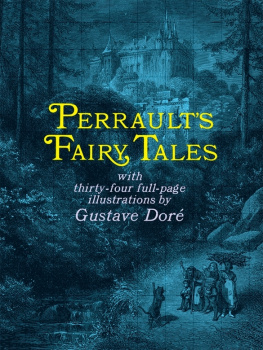ANCIENT FAIRY AND FOLK TALES
This anthology explores the multitude of evidence for recognisable fairy tales drawn from sources in the much older cultures of the ancient world, appearing much earlier than the 17th century where awareness of most fairy tales tends to begin.
It presents versions of Cinderella, The Emperors New Clothes, Snow White, The Frog Prince and a host of others where the similarities to familiar modern versions far outweigh the differences. Here we find Cinderella as a courtesan, Snow White coming to a tragic end, or an innocent heroine murdering her sisters. We find an emperors new clothes where the flatterers compare him to Alexander the Great, or a pair of adulterers caught in a magic trap. Tantalising fragments suggest that there is more to be discovered: we can point to a Sleeping Beauty where the girl takes on the green colouring of the surrounding wood, or we encounter a Rumpelstiltskin connected to a mystery cult. The overall picture suggests a much richer texture of popular tale as a fascinating new legacy of antiquity.
This volume breaks down the traditional barriers between Classical Mythology and the fairy tale, and will be an invaluable resource for anyone working on the history of fairy tales and folklore.
Graham Anderson is Emeritus Professor of Classics at the University of Kent. He has written extensively on ancient folk and fairy tale, including Fairytale in the Ancient World (2000) and Greek and Roman Folklore: A Handbook (2006). His most recent publication is Fantasy in Greek and Roman Literature (Routledge, 2019). He is currently working on a study entitled The Pepaideumenos and his World: Intellectuals in the Roman Empire.
First published 2020
by Routledge
2 Park Square, Milton Park, Abingdon, Oxon OX14 4RN
and by Routledge
52 Vanderbilt Avenue, New York, NY 10017
Routledge is an imprint of the Taylor & Francis Group, an informa business
2020 Graham Anderson
The right of Graham Anderson to be identified as author of this work has been asserted by him in accordance with sections 77 and 78 of the Copyright, Designs and Patents Act 1988.
All rights reserved. No part of this book may be reprinted or reproduced or utilised in any form or by any electronic, mechanical, or other means, now known or hereafter invented, including photocopying and recording, or in any information storage or retrieval system, without permission in writing from the publishers.
Trademark notice: Product or corporate names may be trademarks or registered trademarks, and are used only for identification and explanation without intent to infringe.
British Library Cataloguing-in-Publication Data
A catalogue record for this book is available from the British Library
Library of Congress Cataloging-in-Publication Data
Names: Anderson, Graham, author.
Title: Ancient fairy and folk tales: an anthology / Graham Anderson.
Description: Abingdon, Oxon; New York: Routledge, 2019. | Includes
bibliographical references and index.
Identifiers: LCCN 2019031939
Subjects: LCSH: Fairy talesHistory and Critism. | FolkloreHistory.
Classification: LCC GR550 .A56 2019 | DDC 398.209dc23
LC record available at https://lccn.loc.gov/2019031939
ISBN: 978-1-138-36178-2 (hbk)
ISBN: 978-1-138-36179-9 (pbk)
ISBN: 978-0-429-43244-6 (ebk)
Typeset in Bembo
by codeMantra
There has been no lack of new writing about Fairy Tale over the past half-century. But amid the greatly increased provision of materials it is not unreasonable to describe Ancient Fairy Tale as still a Cinderella subject. I set out to remedy this at the end of the last millennium with a treatment entitled Fairytale in the Ancient World; two years later William Hansen produced a much more comprehensive handling in his presentation of International Tales, Ariadnes Thread. Both treatments endeavoured to establish the existence of a canon of traditional popular tales in Greek and Roman literature, and both were keyed as a matter of strong principle to what is now the Aarne-Thompson-Uther Index, so as to be easily accessible to professional folklorists and encourage the maximum access to comparative material. But the overall result has given rise to a lack: we do not have an annotated collection in translation of Greek and Roman fairy and folktales as such. Both Hansen and I had presented our respective repertoires through extensive summaries of tales: it is now useful to provide a collection of actual texts in translation, as Bryan Reardons anthology has long done for the ancient novel. While this book was in its final stages Hansen brought out a comprehensive Book of Greek and Roman Folktales, Legends and Myths (2017): once again Hansens scope is wider, emphasising originally oral anecdotes, jokes and the like, but his scholarly apparatus is this time designedly much more limited. Some 50 tales in the following collection do not appear in either of Hansens volumes; the need for a further collection of classical fairy and folktales remains.
I have accumulated a number of debts along the way: more than a decade ago I presented a consultation paper at the Folklore Society on the scope of a projected anthology: I am grateful to all who took part and contributed useful suggestions. I owe a special debt to William Hansen, who has supplied me with offprints over a number of years, and to Nancy Canepa, Debbie Felton and Daniel Ogden, who invited me to join in complementary projects which have offered further stimulus. I have been grateful for the support of Jack Zipes over many decades, and of two anonymous referees who encouraged me towards a more expansive introduction. The book is dedicated to Richard Stoneman, close on 20 years after our first foray into Fairy Tale. I described my study then as a Bluebeards castle of dismembered narratives; it has now seen their reassembly into witnesses that speak with their own voice.
Graham Anderson
University of Kent at Canterbury











